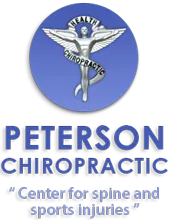It seems that as they get older, many people expect their knees to give out. Osteoarthritis of the knee is, in fact, common in those over age 50 and knee arthroscopy is one of the most frequently done orthopedic surgeries.1 Also, increasing numbers of people are undergoing total knee replacements. The rate has been recently described as "soaring".2
What's going on? Is this mechanical failure people seem to be experiencing in their joints a new phenomenon? Or are more diagnoses being made now owing to the ready availability of CAT scans and MRI units? Are more surgeries being done owing to the abundance (at least in urban areas) of surgeons wanting to perform these procedures?
Regardless, deeper questions point to lifestyle patterns that may predispose a person to developing knee osteoarthritis. A comparison with earlier times may be useful in this context. For example, it's not well-known that people in the Middle Ages - the 11th and 12th centuries - lived into their 80s. They managed to get along without ibuprofen, without arthroscopy, and without major surgical procedures. But we live in the 21st century. What is our problem?
The major difference between the average person living 900 years ago (or even 100 years ago) and us is that most of those people did a variety of physical activities all day long. People plowed fields and chopped down trees. They built fences and did housework. They walked to the market and carried their purchases back home. They were active, frequently intensely active throughout the day, often working 6 days a week. We're just as active and work just as hard. But most of our work and activities involve a seated position. In contrast to our forebears, we sit all day. Compounding the problem, more than 2/3 of adults (in the United States, at least) do no regular exercise.
The result is that joints which were designed to perform heavy physical work are now effectively doing none. Our hips, knee, and ankles were built to support a labor-intensive lifestyle which initially involved hunting and gathering and then (for the majority of Homo sapiens) focused on agriculture. Now these large joints are inactive for most of the day. Everyone knows that a machine left untended will begin to malfunction. Dust and rust accumulate and the machine will break down, usually sooner than later. Our bodies are no different.
Thus for many of us, the short answer is that our knees hurt because we don't use them properly. Of course, some persons have medical conditions such as rheumatoid arthritis that often involve chronic knee pain. But the vast majority of knee problems are due to lack of use. What there is to do is to get active. The good news is that restoring regular vigorous exercise is easy. Walking at a modest pace for thirty minutes, five times a week, is all that it takes. You can do more, but that's a personal choice. Exercise is not a magic solution, but restoring needed activity levels is an important part of the solution to chronic knee pain.3
1Potts A, et al: Practice patterns for arthroscopy of osteoarthritis of the knee in the United States. Am J Sports Med 40(6):1247-1251, 2012
2Leskinen J, et al: The incidence of knee arthroplasty for primary osteoarthritis grows rapidly among baby boomers: A population-based study in Finland. Arthritis Rheum 64(2): 423-428, 2012
3Smith TO, et al: The effectiveness of proprioceptive-based exercise for osteoarthritis of the knee: a systematic review and meta-analysis. Rheumatol Int 2012 Jul 22 [Epub ahead of print]
